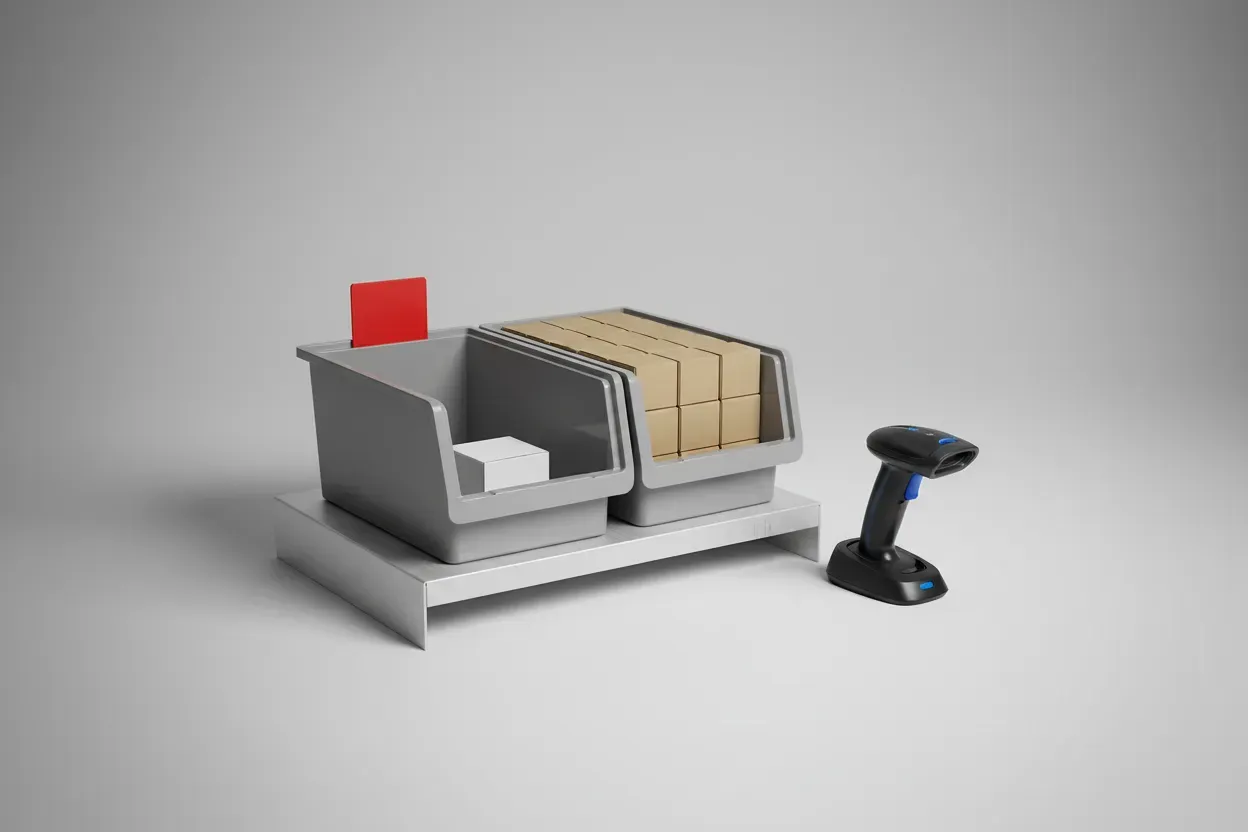How to Improve Employee Onboarding: 17 Best Practices
Effective employee onboarding is crucial for organizational success, yet many companies struggle to get it right. This article presents a comprehensive guide to enhancing the onboarding process, drawing on insights from industry experts. From personalizing the experience to implementing structured training, these best practices will help transform new hires into productive team members more efficiently.
- Involve New Hires in Decision-Making
- Create a Living Onboarding Process
- Prioritize Self-Care in Training
- Cross-Train Across Departments
- Implement Structured Ground-Up Training
- Personalize Onboarding to Career Goals
- Design Onboarding as a Customer Journey
- Document and Evolve Training Systems
- Start with Hands-On Equipment Training
- Begin with Meaningful Experiential Learning
- Emphasize Interactive, Practical Training
- Assign Peer Coaches for Social Integration
- Develop a Structured Onboarding Roadmap
- Initiate Pre-Boarding Before Day One
- Balance Technology with Human Connection
- Optimize Existing Processes with AI
- Systematize and Document All Steps
Involve New Hires in Decision-Making
As someone who has built ENX2 Legal Marketing over 15+ years and kept my entire team employed through a global pandemic, I’ve learned that the best onboarding happens when you immediately involve new hires in your decision-making process.
Instead of traditional training, we gather around our conference table for quick overview sessions where new employees provide their input on various important items. I’ve entered these sessions with one perspective, only to find that after listening to everyone—including the newest team member—we settle on a much better idea. When someone who joins on Monday influences a client strategy by Wednesday, they understand that their voice matters here.
The magic happens because I hire people who can advise me, not people I need to micromanage. New hires see from day one that I genuinely want their opinions and will implement their ideas. This approach has helped us successfully turn around law firms nationwide because our team feels ownership in every client’s success from the moment they start.
You don’t hire people to tell them what to do—you hire them for their expertise. Make that clear immediately, and watch how quickly they become invested in your mission.
 Nicole Farber
Nicole Farber
CEO, Nicole Farber
Create a Living Onboarding Process
Onboarding isn’t about flooding new hires with information, but about creating clarity and confidence early on. One thing that has helped us is treating onboarding as a living process, not a one-time checklist. After each round, we ask for concrete feedback: Which steps felt helpful? What slowed you down? We track how fast new hires finish training, how soon they contribute meaningfully, and whether they stick around past those critical first months. If something delays their productivity, we fix it immediately, with no bureaucracy.
One improvement we made recently was tightening our onboarding guide after a few developers mentioned that tool access took too long. That small change cut their ramp-up time by nearly a week. For global hires especially, a clear structure and timely support go a long way. Every update we make is based on actual feedback, not assumptions. When new team members feel equipped, not overwhelmed, they start adding value faster, and that’s a win for everyone.
 Ann Kuss
Ann Kuss
CEO, Outstaff Your Team
Prioritize Self-Care in Training
As someone who has run a counseling business for over 23 years while training mental health professionals, the biggest onboarding mistake I see is rushing people into client work without teaching them self-care first. Burnout affects our field more severely than most, so I completely reverse the approach.
At my Mindfulness-based Therapy Training Institute, new instructors spend their first two weeks learning mindfulness practices for themselves before they engage with any curriculum. They participate in daily 10-minute meditation sessions and learn stress management techniques that they will eventually teach to others. This isn’t just feel-good material—it’s practical skills they use during and between sessions.
The game-changer came when I began having new team members practice these techniques on themselves first, then observe how it changed their energy and focus. One instructor told me she prevented her own burnout in the third month using breathing techniques from the first week of onboarding. Now she teaches those same methods to other therapists, and our course completion rates have increased to 94% because instructors model the self-care they’re teaching.
The key is making self-care a job requirement, not an afterthought. When employees learn to manage their own stress from day one, they show up more present for clients and colleagues, which directly improves your bottom line through better retention and outcomes.
 Lynn Wonders
Lynn Wonders
Founder, Mindfulness-based Therapy Training Institute
Cross-Train Across Departments
Running multiple companies under Direct Express for over two decades, I’ve learned that cross-training between departments creates the strongest new hires. When someone joins our real estate team, they spend their first week shadowing our property management and mortgage divisions too.
This approach came from necessity when I noticed our realtors were losing deals because they couldn’t answer basic financing or rental management questions. Now every new agent understands how our mortgage pre-approvals work and what makes properties good rental investments.
The results speak for themselves – our agents close 30% more deals because they can guide clients through our full suite of services instead of just showing houses. One of our newer agents, Mary Blinkhorn, went from zero real estate experience to handling complex transactions involving buying, financing, and rental management within her first six months.
The key is showing new employees how their role connects to the bigger picture. When people understand the entire customer journey across all your services, they become consultants instead of just order-takers.
 Joseph Cavaleri
Joseph Cavaleri
CEO, DIRECT EXPRESS
Implement Structured Ground-Up Training
One tip I’ll give any business, especially in trades like roofing, is to stop throwing new hires straight into the fire. That “learn as you go” mindset is a shortcut to sloppy work, accidents, and callbacks that cost time and money. If you want better crews, train them right from day one.
At Achilles Roofing and Exterior, we built a simple but solid onboarding program. We don’t just hand new guys a harness and shove them up a ladder. The first week is off the roof, on the ground. We walk them through how we do things—our materials, job site expectations, safety protocols, and customer service standards. We show them how we stage a site, how we clean up, and how we talk to homeowners. That’s important—because roofing isn’t just nails and shingles. It’s trust.
The second week, they’re shadowing a lead roofer. No tools in hand—just eyes open, learning how we handle installs, deal with challenges, and keep the site clean and tight. Only after that do they start handling light tasks under close supervision.
What did that change? Turnover dropped. Mistakes went down. Our reviews improved. And most importantly, the crew started taking pride in doing things the Achilles way—not just rushing to finish the job.
So here’s my tip: slow down your onboarding to speed up your success. Teach them the trade and your standards early. It’s an investment that pays off every time your crew steps on a roof.
 Ahmad Faiz
Ahmad Faiz
Owner, Achilles Roofing and Exteriors
Personalize Onboarding to Career Goals
I have found it invaluable to personalize onboarding by aligning it with the employee’s specific role and career goals. Instead of a one-size-fits-all induction, tailoring the experience helps new hires feel understood and supported from day one.
For example, at a logistics company I worked with, we introduced a structured 30-60-90 day plan customized for each department. New team members received role-specific training modules, mentoring sessions, and regular check-ins.
We also used peer shadowing to give practical context. This approach reduced confusion, boosted early engagement, and cut our average onboarding time by 25 percent. New hires reported feeling more confident and productive in their first month.
By focusing on relevance and clarity, we created a program that not only welcomed people but also equipped them to thrive. The key was investing time early to build a foundation that encouraged long-term growth and retention.
 Dhari Alabdulhadi
Dhari Alabdulhadi
CTO and Founder, Ubuy Peru
Design Onboarding as a Customer Journey
One of the most helpful tips I can give is this: design onboarding like a customer journey. Map it out with clear milestones, feedback loops, and “aha” moments. Employees aren’t just learning procedures; they’re absorbing culture, expectations, and accountability from day one. Companies often dump documents or rely on passive slide decks, but those approaches don’t translate into engagement or long-term retention.
Let me give you a real example that’s fresh in my mind. ChromeQA Lab, the QA-focused tech company I recently researched, has a small team but punches above its weight thanks to how tightly they integrate new hires into active client work. Instead of keeping new QA engineers in a simulated sandbox, they pair them with senior testers on real projects within the first week. They use bite-sized SOPs for tools like Selenium and Postman, layered with peer reviews and shadowing calls with US clients. By week three, new hires are pushing test scripts that go live confidently and with accountability.
That kind of onboarding – experiential, collaborative, and client-facing – builds both skill and confidence. If more companies treated onboarding like a high-stakes, user-centric experience, they’d see ramp-up time shrink and retention rise dramatically.
 Shishir Dubey
Shishir Dubey
Founder & CEO, Chrome QA Lab
Document and Evolve Training Systems
As someone who has built and franchised BooXkeeping into over 85 locations nationally, I’ve learned that systems documentation during onboarding is crucial. Most businesses introduce new hires to training without capturing what actually works in real-time.
Here’s what transformed our franchise training: I began recording every single onboarding session and client interaction during the first 30 days. We would review these recordings weekly with new franchise owners, identifying exactly which approaches closed deals and which lost clients. This created a living playbook that evolved with actual performance data.
The breakthrough came when we made documentation part of the onboarding process itself. New franchisees had to document their own learning journey – what confused them, what clicked, and what they would change. This wasn’t busywork; it became our franchise training manual that we now use across all locations.
Since implementing this approach, our new franchise locations reach profitability 40% faster than before. The key is making your onboarding participants active contributors to the system, not passive recipients of generic training materials.
 Max Emma
Max Emma
Certified Franchise Consultant, Main Entrance Franchise Consulting
Start with Hands-On Equipment Training
As someone who built BrushTamer from the ground up with specialized equipment like FAE mulchers, I’ve found that equipment-first training creates the most competent employees quickly. Instead of starting new hires with safety manuals and theory, I put them directly on our skid-steering mulchers and mini excavators from day one—with supervision, of course.
My breakthrough occurred when I began having new operators work on blueberry field clearing projects first. These jobs are forgiving but teach all the core skills—precision, equipment feel, and reading terrain. Carter and Zack both started this way, and within two weeks, they could handle complex forestry mulching independently.
The key is matching training projects to skill progression. Blueberry clearing teaches basics, then brush management builds confidence, and finally, they graduate to full land clearing projects. This progression means new hires see immediate results and understand how their work transforms properties, which keeps them engaged far better than classroom training ever could.
 Leon Miller
Leon Miller
Owner, BrushTamer
Begin with Meaningful Experiential Learning
As the founder of Befriend Cows and someone who’s onboarded volunteers across multiple animal sanctuaries globally, I’ve found that experiential learning through meaningful connections creates the most effective training foundation.
We revolutionized our volunteer onboarding by replacing traditional orientation sessions with direct animal interaction experiences. New volunteers spend their first day simply observing and connecting with rescued cows and bulls, learning patience and empathy before any technical training begins. This approach reduced our volunteer dropout rate by 40% because people immediately understood the emotional core of our mission.
The breakthrough came when we started pairing new corporate volunteers with experienced sanctuary staff for what I call “compassion immersion” sessions. During my TEDx speaking engagements, I’ve seen companies adopt this model—one tech company reported 85% higher employee engagement scores after implementing animal sanctuary volunteering as part of their onboarding process.
The key is front-loading emotional connection before procedural knowledge. When employees understand the “why” through direct experience rather than presentations, they become more invested in both the role and the organization’s broader mission.
 Preethi Sirinicas
Preethi Sirinicas
Founder, Befriend Cows
Emphasize Interactive, Practical Training
Among useful suggestions that I would convey to businesses in an attempt to enhance their employee onboarding and training procedures, the first one I would provide is to make the process more practical and interactive. Instead of just reading materials or sitting through long presentations, consider using real-life situations in which new employees will have a chance to practice what they will be doing during their work. This not only helps them understand the practical aspect of their job but also makes them more confident and ready.
As another example, we developed an education program in our company where new employees immediately get to shadow their peers as well as jump directly into the tools and systems they will use. They are also taken through team-building and problem-solving exercises resembling the issues they would encounter in real life. This strategy has been much more successful since it is not about watching or listening, but it is about doing. Consequently, recruited individuals feel more connected, involved, and better prepared to contribute instantly.
What I have determined is that hands-on involvement with the entire onboarding process on the first day encourages employees to become part of the team at a much more rapid rate, and they become more productive as well. In addition, it creates the atmosphere of a positive workplace culture in which learning and cooperation are valued.
 Alex Saiko
Alex Saiko
CEO & Co-Founder, MiraSpaces
Assign Peer Coaches for Social Integration
A recommended approach for enhancing onboarding is to integrate personalized interactions with organized training sessions within the first month or two. New employees require both social and professional interactions.
To address this challenge, we implemented onboarding innovation, developing a four-week schedule with role-specific training, team introductions, and weekly check-ins with a personalized onboarding buddy. The most impactful change involved assigning a “peer coach” to newly hired personnel, which was a person from another department at the same level. This fostered candid interactions, eased first-week pressure, and helped them understand the broader company culture much earlier.
The outcome? We observed a 25% reduction in new hire ramp-up time and a significant increase in newly joined employees’ first-month engagement scores. Employees seek to bond—and not just through manuals and policies—from their very first day at work.
 Sabah Drabu
Sabah Drabu
CEO, CookinGenie
Develop a Structured Onboarding Roadmap
For me, the biggest game-changer in improving onboarding and training has been clarity paired with accountability right from Day 1. At Vancouver Home Search and PLACE Real Estate Team, we realized early on that most onboarding failures come from vague expectations and inconsistent systems, so we built a structured 10-day onboarding roadmap that we now swear by.
Each day has a focus. For example:
Day 1 is all about “Setup for Success,” writing a LinkedIn bio, updating voicemail, setting up email signatures, and logging into our CRM (Follow Up Boss).
By Day 3, they’re deep into tech training, and by Day 6, we’re coaching them on real estate lead generation techniques, tailored to how we actually work.
On Day 9, they build a personal business plan, so they finish onboarding with a clear direction, not just knowledge, but action.
One thing that’s worked incredibly well for us is role-play-based training using AI. Every new team member does two AI objection-handling scenarios per day. It helps build confidence and muscle memory without the pressure of live client calls.
 Adam Chahl
Adam Chahl
Owner / Realtor, Vancouver Home Search
Initiate Pre-Boarding Before Day One
We start onboarding before day one. New teachers receive a welcome kit, a setup guide, and an assigned buddy. This pre-boarding phase builds connection and confidence. It helps them hit the ground running and feel part of something before they even start.
 Joaquin Calvo
Joaquin Calvo
Director, Comligo Spanish
Balance Technology with Human Connection
Implement technology strategically. Technology can be incredibly helpful with onboarding, but you shouldn’t rely on it solely. Yes, training and filling out paperwork are vital parts of onboarding, but so are getting to know the team and becoming integrated into the workplace. Technology should be used as a helpful tool in onboarding, not a crutch.
 Edward Tian
Edward Tian
CEO, GPTZero
Optimize Existing Processes with AI
Don’t just use something like AI to try and optimize processes if it doesn’t have any training data.
If you have internal processes and systems already, then use them in conjunction with software or tools that are built to optimize what you already have, not replace it entirely.
 Tracey Beveridge
Tracey Beveridge
HR Director, Personnel Checks
Systematize and Document All Steps
Document everything and systematize every little process, no matter how minuscule it may seem.
All of these steps add up to a seamless onboarding process. If you can document a part of the process, you can track its success and use that data to inform onboarding improvement strategies too.
 Wendy Makinson
Wendy Makinson
HR Manager, Joloda Hydraroll







































